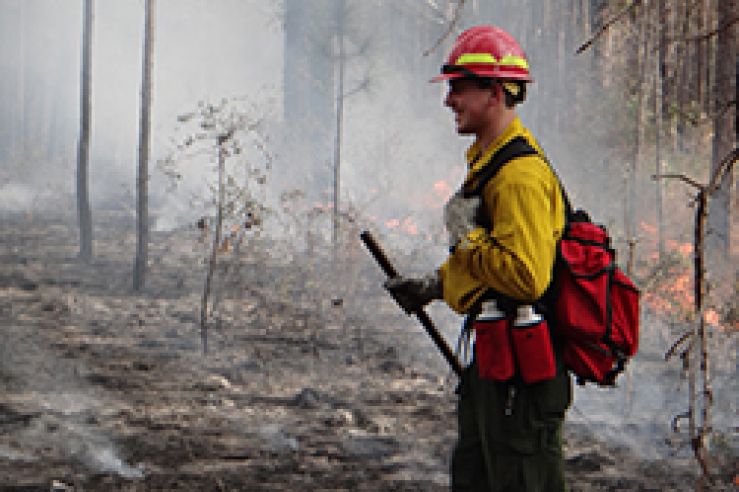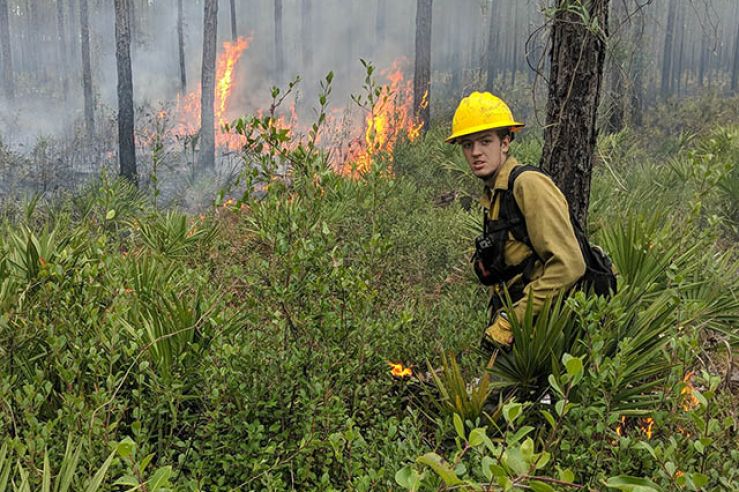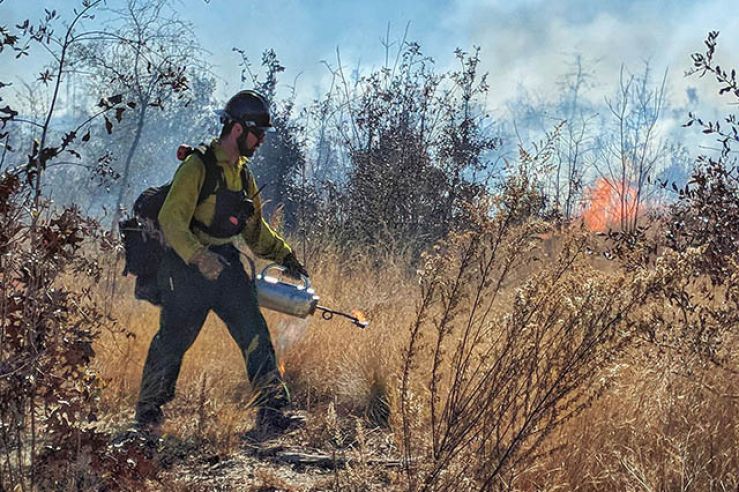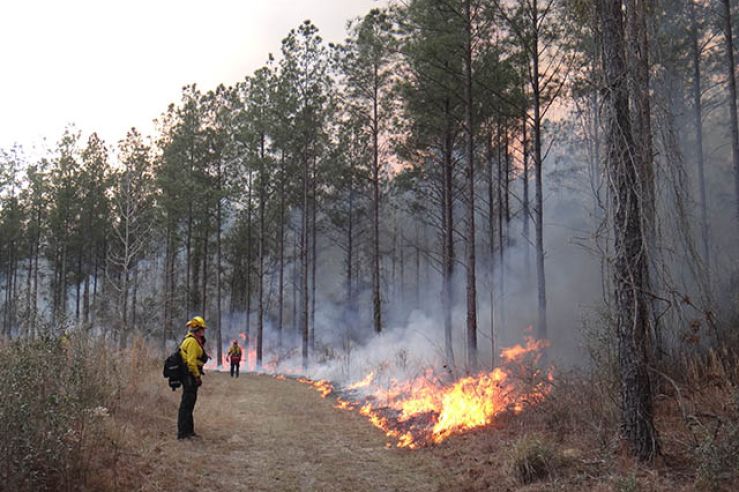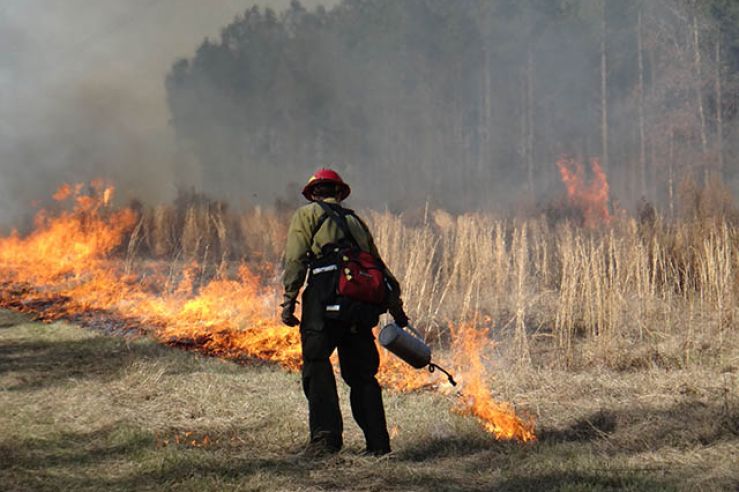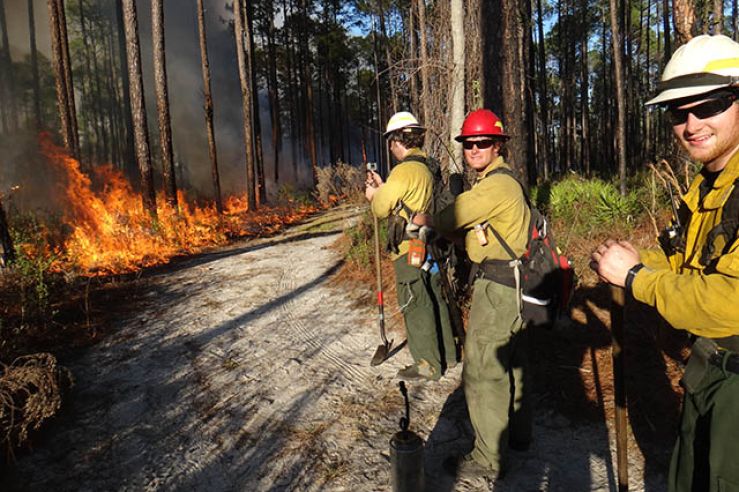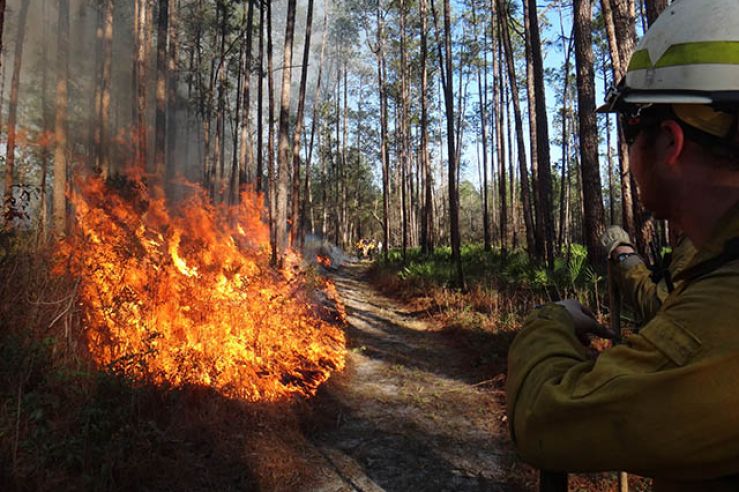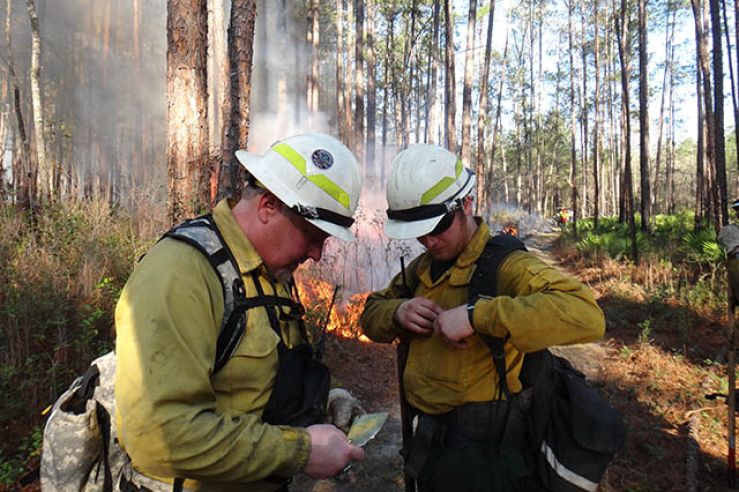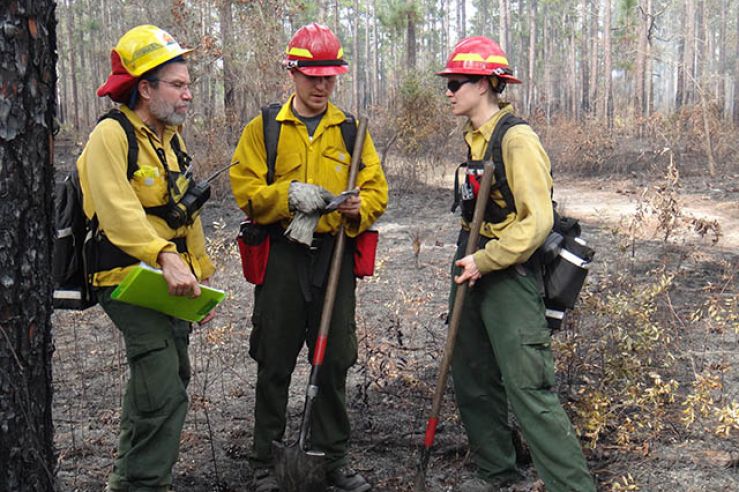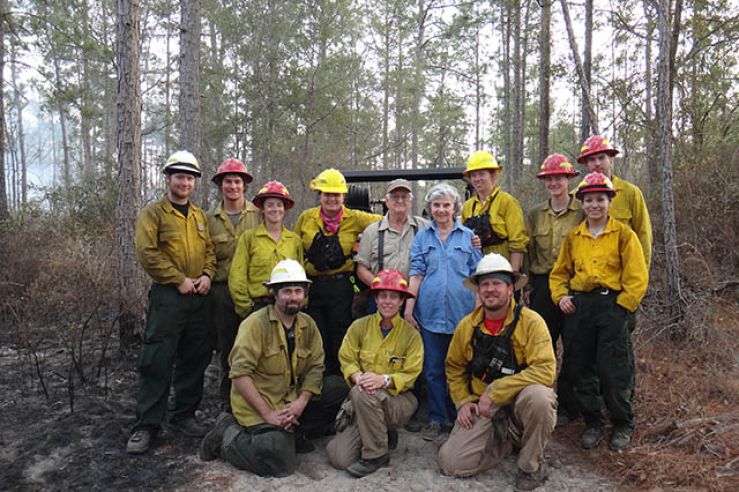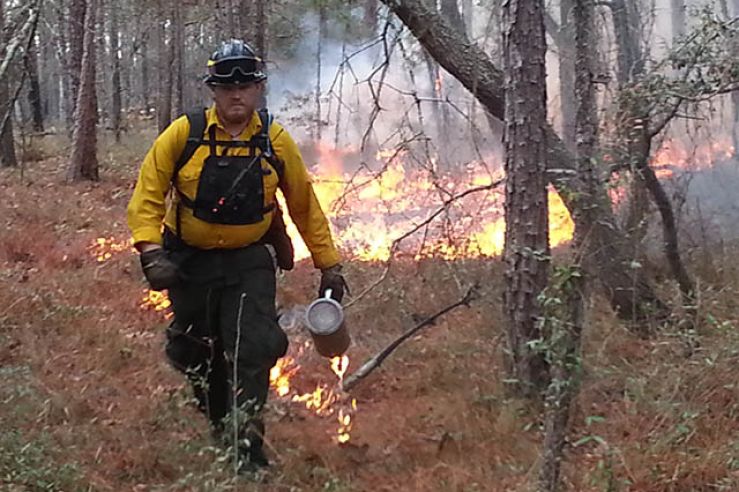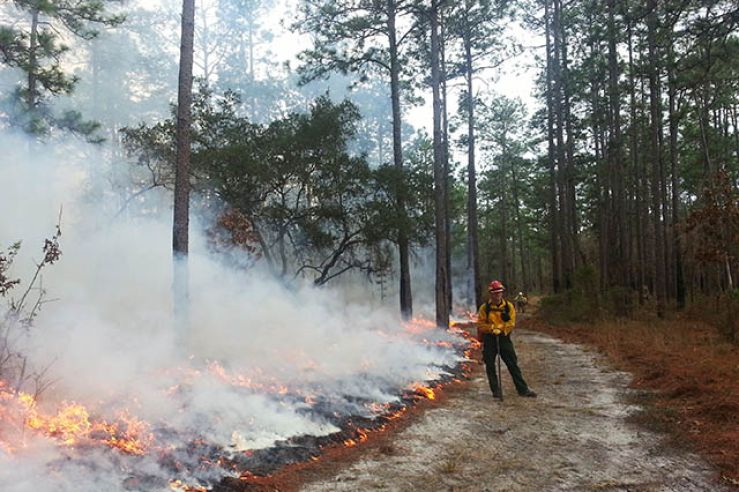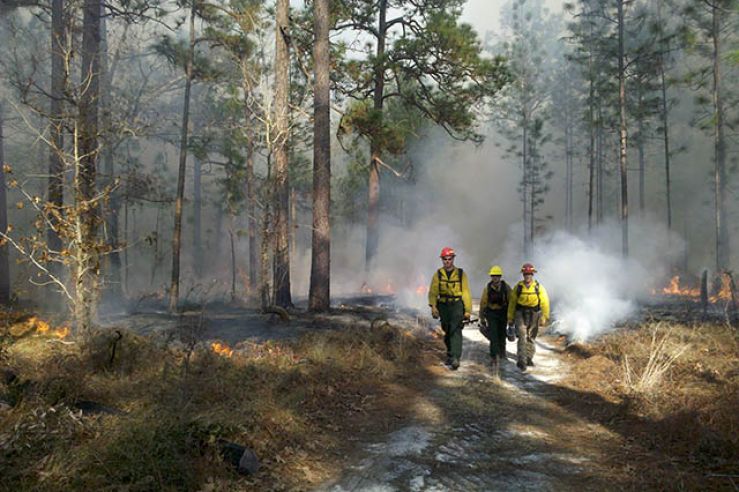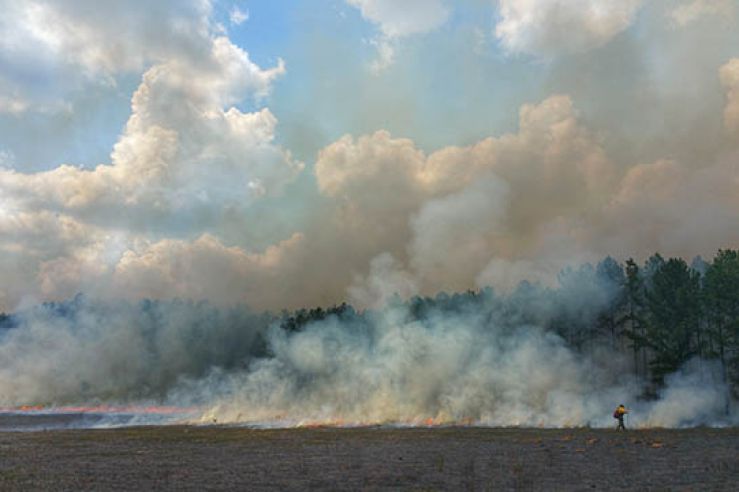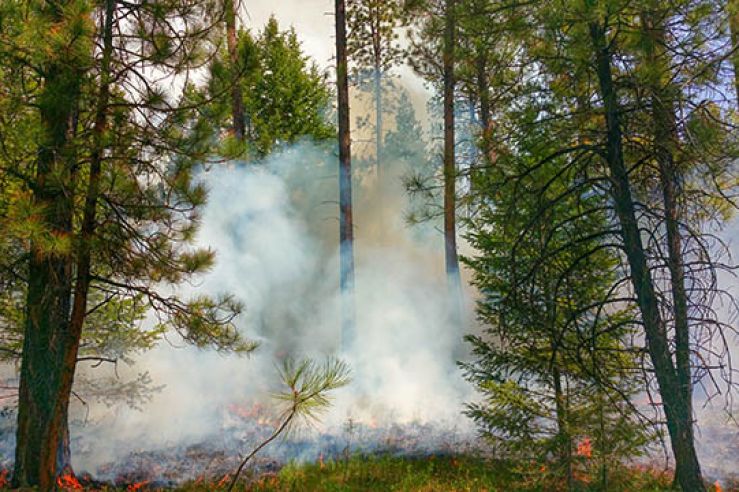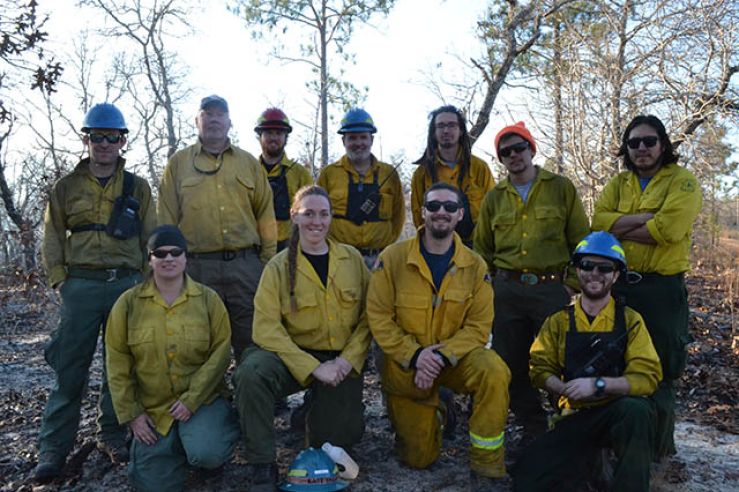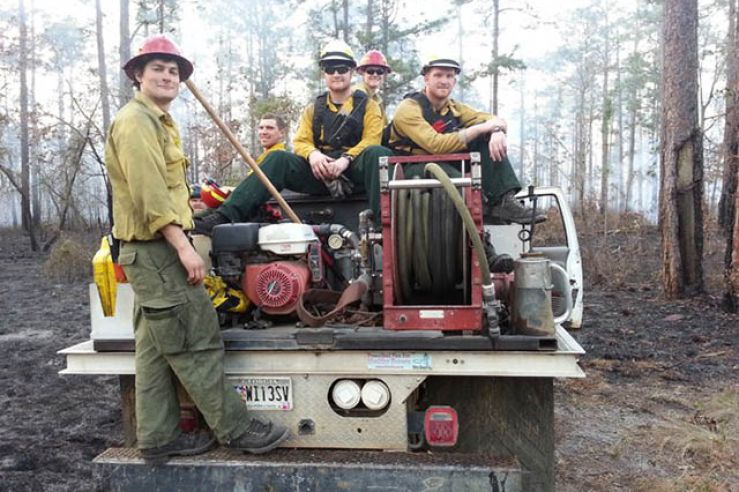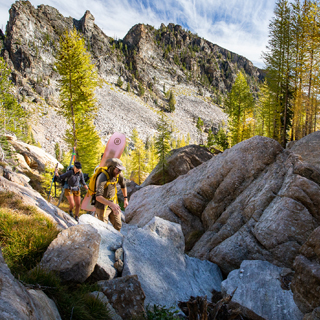Fire Sciences Minor
Prepare for a career in fire management
The Wildland Fire Sciences and Management program at the University of Montana is a unique academic program for students motivated to solve problems in wildland fire — and is Montana's only academic program in wildland fire. Explore fire's role on the land, manage fire in forests, restore ecosystems, and gain employable skills — while preparing for exciting and challenging careers.
You can earn a minor in Fire Sciences & Management or a bachelor's degree in Resource Conservation with a Fire Management area of study. Graduate students can specialize in fire in their master's or doctoral programs.
Advisors: Carl Seielstad and Phil Higuera
Check out photos from a recent field trip that the Basic & Applied Fire Ecology (FORS 333) class took to a forest that burned 10 years ago to study what happens after a wildfire.

Minor Requirements
The minor in Fire Sciences and Management provides focused, complementary studies in wildland fire to prepare you for careers in fire-related natural resource management and for graduate school in fire sciences.
The Fire Sciences & Management minor requires 23 credits in four subject areas. You are required to complete a fire core which includes coursework in ecology, weather and climate, fire management, and a field-based practicum. You must also select from electives in measurements, natural/management sciences, and human dimensions. The program is very complementary to our majors in Environmental Science and Sustainability; Forestry; Parks, Tourism and Recreation Management; or Wildlife Biology but is also open to students from majors outside the FCFC. The minor requires a significant number of upper-division credits and many of the classes have prerequisites, which means that you should consider the minor early in your academic careers.
The advisors expect that students will actively take part in fire management activities via summer jobs, fire training, and the UM Student Association of Fire Ecology and Management chapter.
The W.A. Franke College of Forestry and Conservation and University of Montana offer numerous scholarships that students in this minor could be eligible for. You can also find many other scholarship resources online that are specific for fire science programs.
About Fire Sciences
A Unique Challenge
Wildland fire has offered exciting and lucrative summer job opportunities to generations of firefighters. For many of us, seasonal firefighting is the source of our most memorable work experiences. The significant and growing role of fire within ecosystems, the application of sophisticated tools and technology in fire management, and the increasing public scrutiny of wildland fire make for dynamic opportunities to develop productive careers.
However, negotiating career pathways in fire management can be challenging because students are expected to gain four-year degrees in forestry, biology, or natural resources while simultaneously developing requisite field skills through fire training and experience. Obtaining both requires organization, motivation, knowledge, and hard work. FCFC faculty and staff help students build competitive fire portfolios and gain employment advantages through grounded academic and professional advising.
The Missoula Fire Network
Wildland fires are a critical component of the landscapes surrounding the Missoula area, and have shaped wildland fire history and policy for much of the past century. As a result, Missoula is a center for fire learning, research, training, and technology development and the abundance of wildfire-based activities near Missoula provide unparalleled work and training opportunities for motivated students.
With various agencies, research labs, hotshot crews, helitack, engines, smokejumpers, and local and regional dispatch centers located in and near Missoula, there are many opportunities for students to pursue their interests in wildland fire. The National Center for Landscape Fire Analysis in the W.A. Franke College of Forestry and Conservation works with students and land managers to develop technology, applications, and research to aid fire management. The Southwest Montana Wildland Fire Training Center offers a full training curriculum on the UM campus and UM's College of Technology hosts a two-year structural fire and rescue program.
The U.S. Forest Service Fire Sciences Laboratory is located in Missoula, as is the Missoula Technology Development Center, the Northern Rockies Coordination Center, a Regional Office (Region 1), a Forest Supervisor’s Office (Lolo), and the Aldo Leopold Wilderness Research Institute. The Montana Department of Natural Resources maintains its Forestry Division Headquarters and Southwestern Land Office in Missoula, and the city hosts a BLM Field Office, and numerous fire-related NGOs and private companies. These entities are the basis for numerous formal and informal networks that support and are supported by the Fire Sciences & Management program at UM.
Prescribed Fire Practicum
Earn three credits restoring Longleaf Pine Forests with prescribed fire.
Each January, students can spend two weeks in the southeastern United States using prescribed fire to restore longleaf pine forests. The Prescribed Fire Practicum is open to all FCFC majors and, while not required for the minor in Fire Sciences & Management, is highly recommended.
Students get technical training, learn practical applications, and study theoretical foundations in ecological burning, mostly on land managed by The Nature Conservancy and the State of Georgia. Faculty from the FireCenter at the W.A. Franke College of Forestry and Conservation lead you through a two-week curriculum of prescribed burning and supporting field and academic work. During the practicum, you will participate in field trips with an ecologist from The Nature Conservancy and forest manager; interpret and monitor burn plans to meet ecological objectives; monitor fire behavior, weather and effects; map burn units in the field and digitally; perform briefings and after-action reviews; maintain daily written and photo journals; compile written synopsis of experiences; and prepare post-trip reviews and evaluations (oral and written).
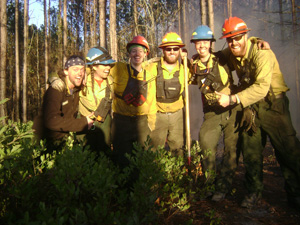 Like the surrounding Georgia State lands, TNC's Moody Forest is a longleaf pine-blackjack oak forest. In the 1700s, longleaf pine covered as much as 90 million acres in North America; today, less than three percent of that forest remains. The longleaf pine forest hosts the most diverse array of species among forested ecosystems in North America; many of those are threatened or endangered species. Hence, The Nature Conservancy and others are trying to protect and restore the remaining longleaf pine forests across the southeastern U.S. Our partnership with TNC gives you an opportunity to practically apply your fire training and education while helping TNC to meet restoration and research objectives.
Like the surrounding Georgia State lands, TNC's Moody Forest is a longleaf pine-blackjack oak forest. In the 1700s, longleaf pine covered as much as 90 million acres in North America; today, less than three percent of that forest remains. The longleaf pine forest hosts the most diverse array of species among forested ecosystems in North America; many of those are threatened or endangered species. Hence, The Nature Conservancy and others are trying to protect and restore the remaining longleaf pine forests across the southeastern U.S. Our partnership with TNC gives you an opportunity to practically apply your fire training and education while helping TNC to meet restoration and research objectives.
Participating students all have experience as wildland firefighters and are studying forestry or natural resource management. This course gives you the opportunity to assume positions of leadership that their normal fire assignments might not. Students are exposed to a variety of land management objectives and fire environments, which will help them become a more dynamic fire manager.
Check out a slideshow of images from past practicums:
